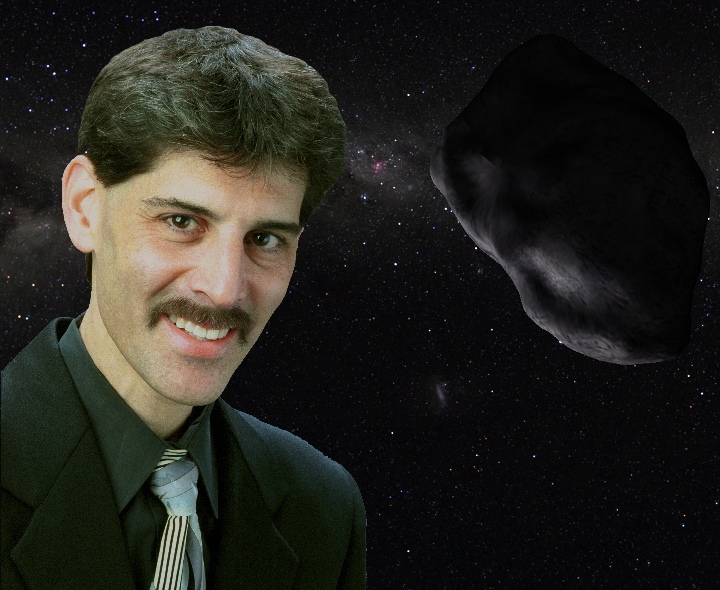Saturn's Surprising Rings: The Fascinating Mysteries Cassini Has Solved
Since astronomer Galileo Galilei first noticed something odd about Saturn in 1610, the planet's picturesque rings have posed many fascinating puzzles. Over the past 13 years, the American-European Cassini-Huygens mission has solved many of these brainteasers.
Cassini's data indicate that most of Saturn's rings are probably as old as the solar system itself — about 4.5 billion years. Earlier observations, during the Voyager flybys of 1980 and 1981, suggested the rings might be as young as 100 million years, the result of a nasty breakup between a large comet and an icy moon. But Cassini observations show that the rings could not have been produced by a single event.
Self-rejuvenating ice meadows
Cassini also determined that the rings are made almost entirely of water ice. So, if they are so old, how do they stay so startlingly bright? Cassini found that the mechanism appears to be related to the high rate of "churn," or interactions between the ring particles. Moons are built within the rings, and then are torn apart by collisions and tidal forces, renewing the bright surfaces of each icy speck. [Photos: Saturn's Glorious Rings Up Close]
Tiny quantities of simple organic compounds tint and shade the bright ice. Astronomer Carl Sagan called these colorful chemicals "tholins," which is Greek for "muddy." These molecular dyes may come from Saturn's moons. Phoebe, in particular, puts off dark material; in fact, Phoebe generates its own wide, diffuse reddish ring of the stuff.
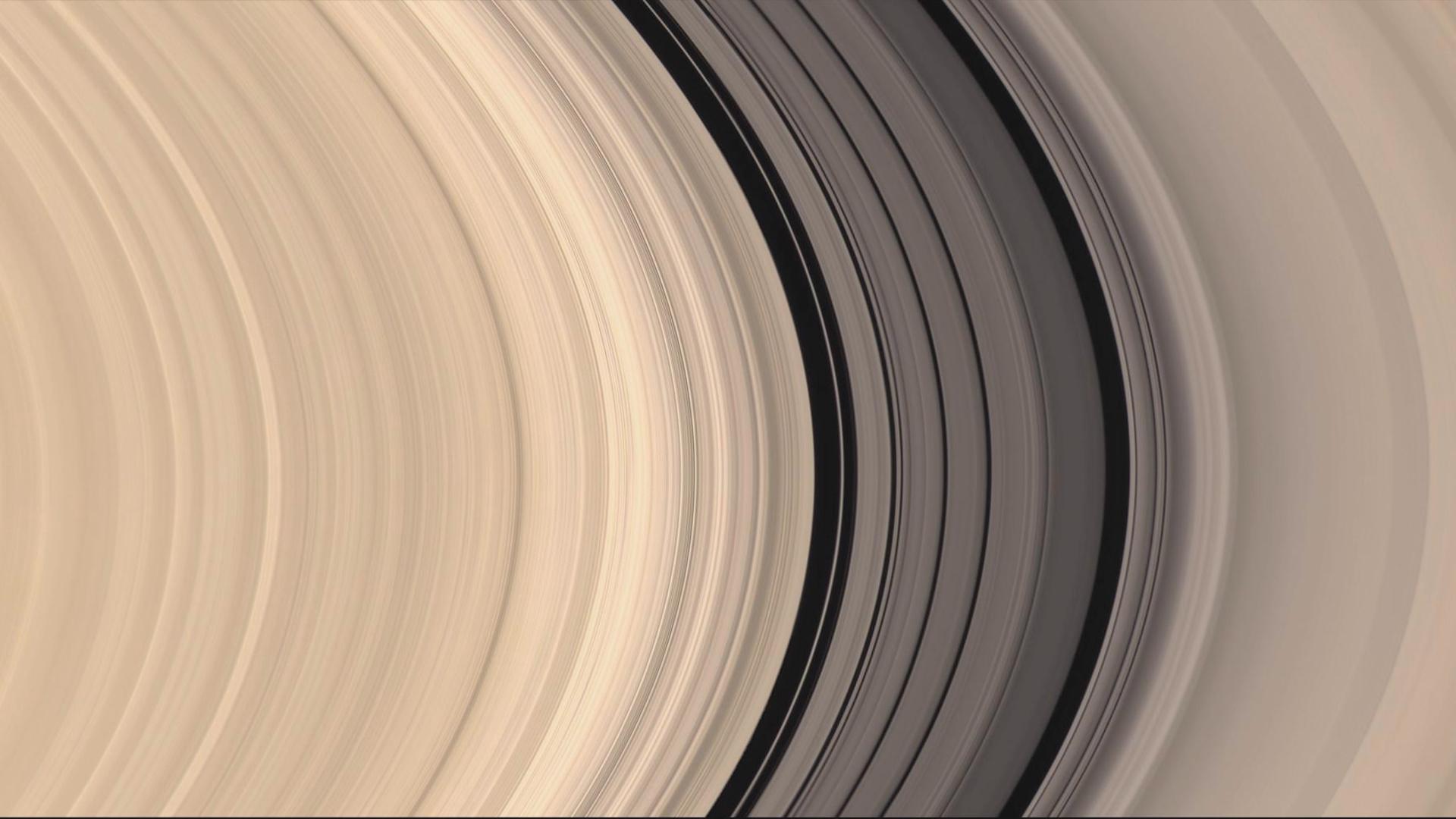
From Cassini's close-up perspective, the ring field appears to be composed of hundreds of thousands of concentric ringlets. But historically, astronomers on Earth observed them as several large, discrete bands. These bands were given letters — A through G — in the order of their discovery.
Cassini discerned that the rings are startlingly flat. They are 30 million times wider than they are thick. On average, the most visible rings — the A, B and C rings — are only about 33 feet (10 meters) high from top to bottom, no taller than a three-story building. Just as in a developing planet system around any star, angular momentum and gravity tend to compress matter into a spinning disk.
Particle physics
By beaming radio signals of different wavelengths through the ring material to antennas on Earth, Cassini's radio scientists were able to determine the sizes and distributions of particles. Most are tiny crystals smaller than dust grains. Many grow to the size of pebbles. Less common are ice rocks and large boulders, up to the size of houses. A few are mountain-size.
Get the Space.com Newsletter
Breaking space news, the latest updates on rocket launches, skywatching events and more!
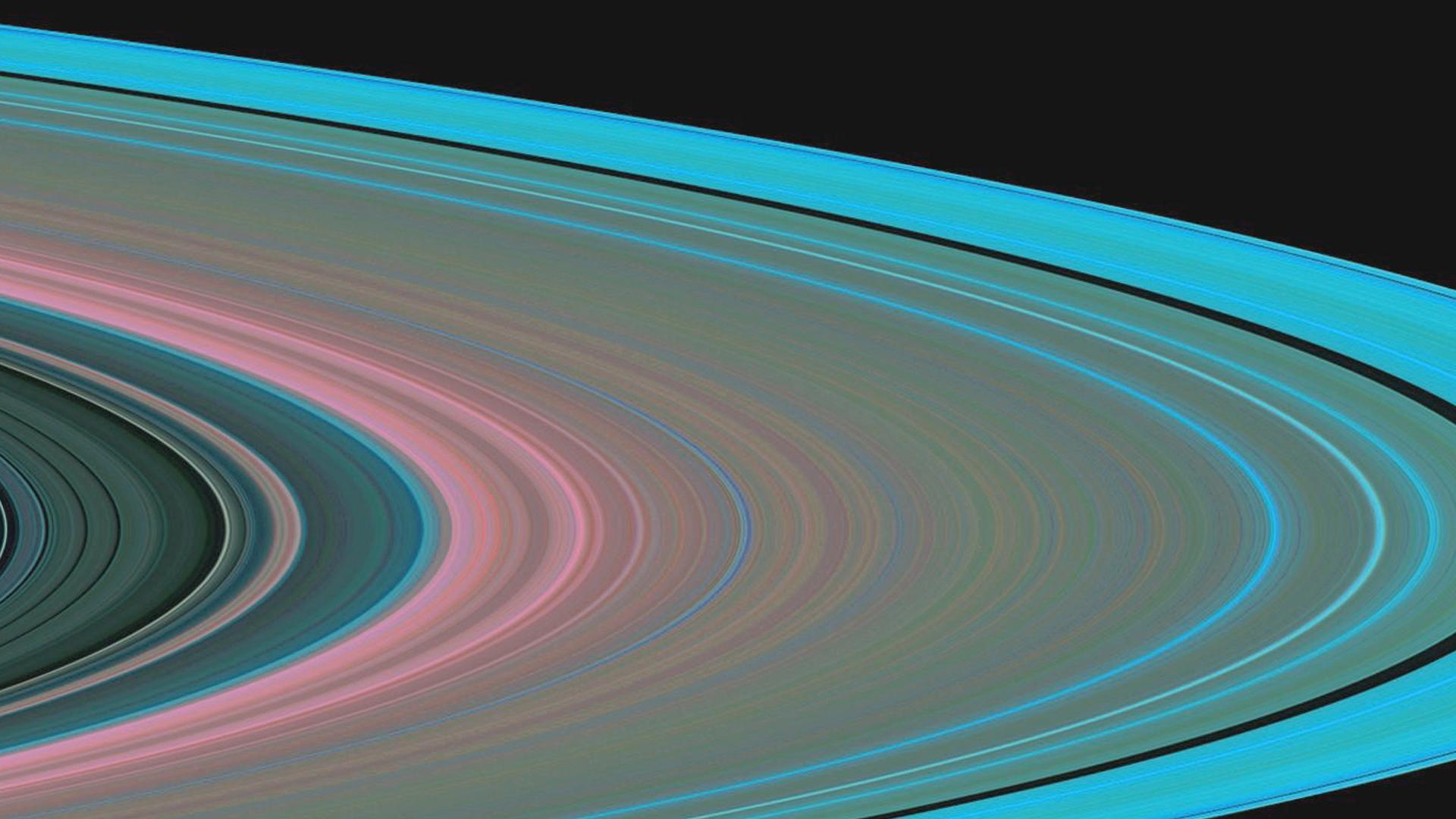
The packing density of particles varies among the major ring groups. Very little light gets through the B ring of crowded snowballs; a hypothetical astronaut there would have to work to dig his or her way through it. The A ring is less congested. And the G ring is very diffuse, like fog or smoke.
The basic physics of the ring system is simple. It's mostly the product of gravity and collisions: Each speck, pebble and boulder revolves around the planet in its own orbit, jockeying for position among trillions of others. Though all are flying at several kilometers per second, they jostle one another only very gently. Bits of ring material may bump and bounce off or stick together, accreting into larger piles. [Latest Saturn Photos by NASA's Cassini Orbiter]
These agglomerations may be temporary or, sometimes, continue to grow. A few may spin off as tiny moons in their own right. Cassini scientist Carl Murray has been watching one particular bump in the outer edge of the A ring since 2013. He named it "Peggy" in honor of his mother-in-law. It looks like a thickened cocoon of ring stuff about 7 miles (11 km) long and 6 miles (10 km) wide, with a thinning trail behind it like a comet. Peggy probably has a compacted nucleus perhaps 1 mile (1.6 km) in diameter, which may someday become a moon. Or, it might be broken up and reabsorbed into the ring, scientists have said.
Waves, warps, kinks and braids
Cassini has witnessed many intricate, interacting wave patterns propagating across the rings. Each one is conjured by a specific gravitational resonance with a Saturn moon.
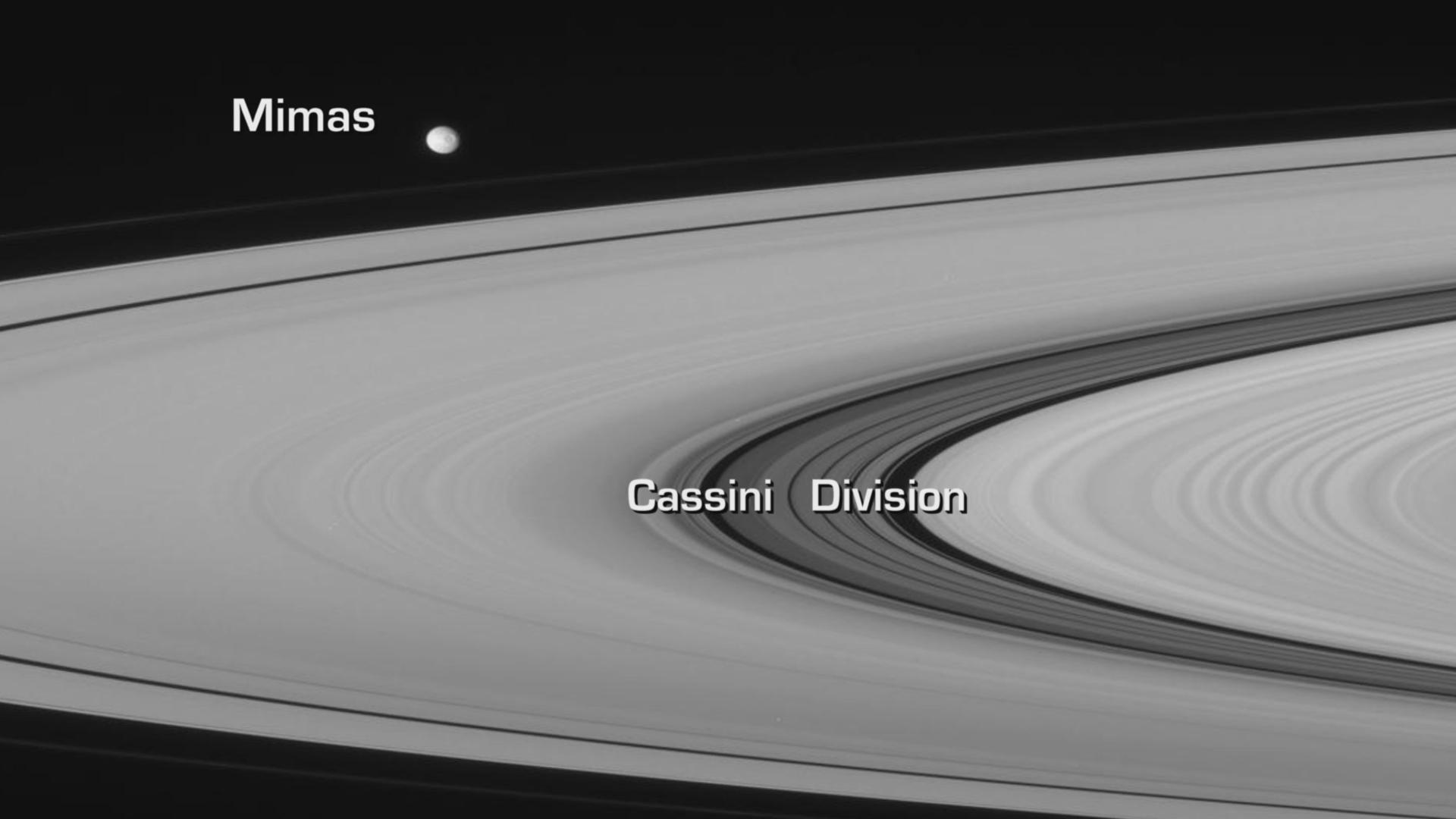
The substantial moon Mimas causes the large Cassini Division in this way. Saturn's moon Pan forges the 202-mile-wide (325 km) Encke Gap, giving it a wavy, scalloped edge. And the tiny moonlet Daphnis plows a 22-mile-wide (35 km) furrow called the Keeler Gap, sending a gravitational ripple to each side — a bit like the bow wave of a boat on a lake.
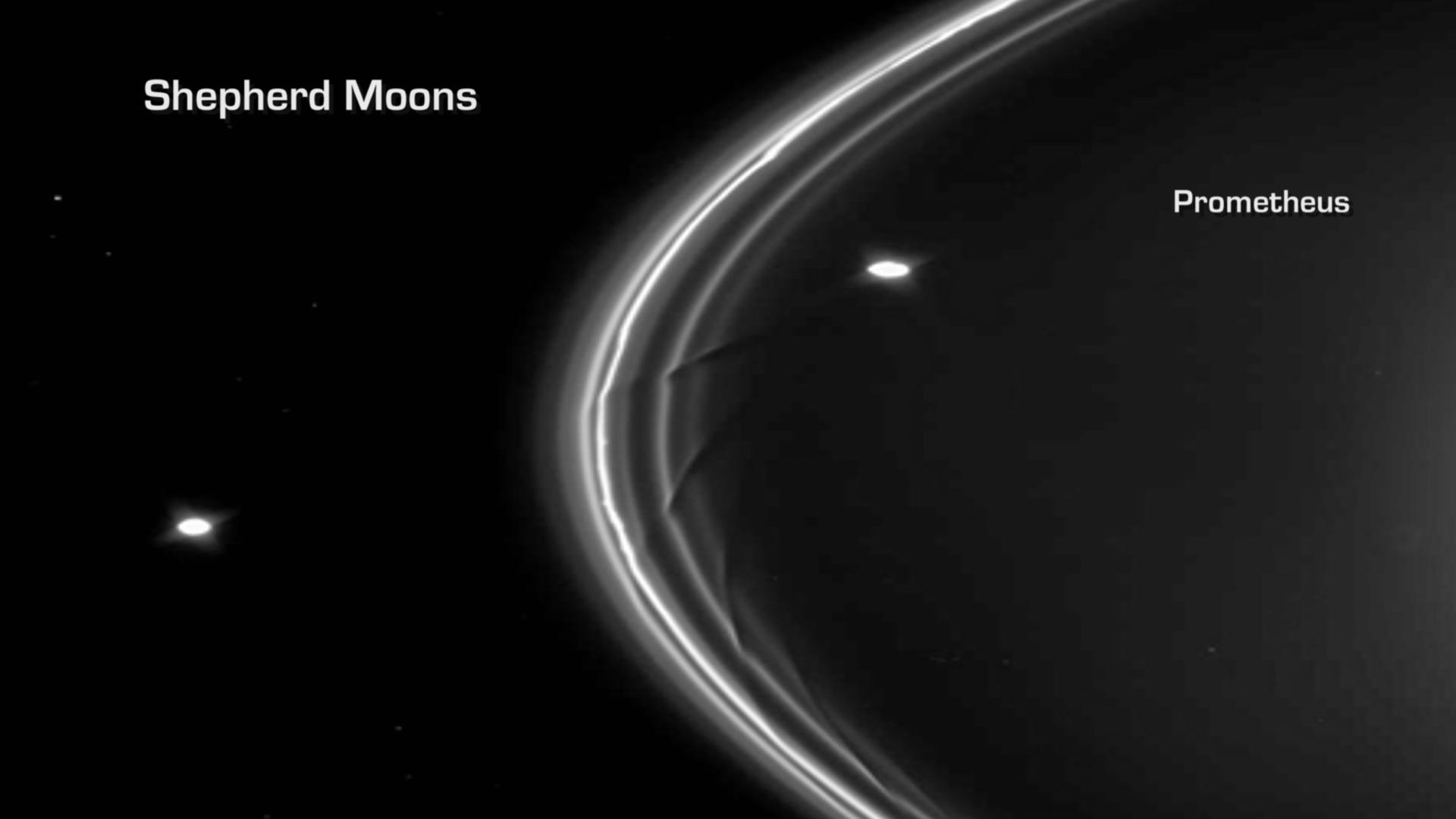
Together, the moons Pandora and Prometheus gravitationally "shepherd" the F ring into shape. But sometimes, the moons' mischievous effects are more direct. Prometheus also perturbs F ring material, pulling it outward when the moon is farthest away. A few of these streams of matter arc back, slam through the ring and leave a trail.
At the opposite low point of its orbit, Prometheus — moving faster than the ring — sometimes softly pokes into the F ring, intruding almost all the way across it, pulling a streamer of icy particles behind it. Cassini captured movies of such "soft collisions."
Solar system analogue
Saturn's rings are much like the squashed disk of material that orbited the fetal sun more than 4 billion years ago. Studying these beautiful structures therefore gives researchers a window across time to gather clues about the formation of planets. The frequency of ring-particle collisions is high, but the Saturn system has dampened its chaos quickly, stabilizing much faster than our solar system and planetary systems around other stars.
Whether you appreciate the science or the aesthetics of the view, watching the grand ballet of ring material through Cassini's camera eyes is a deeply compelling experience.
The author, @DavidSkyBrody, is the writer and director of "Kingdom of Saturn – Cassini's Epic Quest," a documentary look back at the mission, now available at Amazon XiveTV. Brody was formerly executive producer at Purch, the parent company of Space.com and LiveScience.com.
Follow this author @DavidSkyBrody. Follow us @Spacedotcom, Facebook and Google+. Originally published on Space.com.
Join our Space Forums to keep talking space on the latest missions, night sky and more! And if you have a news tip, correction or comment, let us know at: community@space.com.
Dave Brody has been a writer and Executive Producer at SPACE.com since January 2000. He created and hosted space science video for Starry Night astronomy software, Orion Telescopes and SPACE.com TV. A career space documentarian and journalist, Brody was the Supervising Producer of the long running Inside Space news magazine television program on SYFY. Follow Dave on Twitter @DavidSkyBrody.
